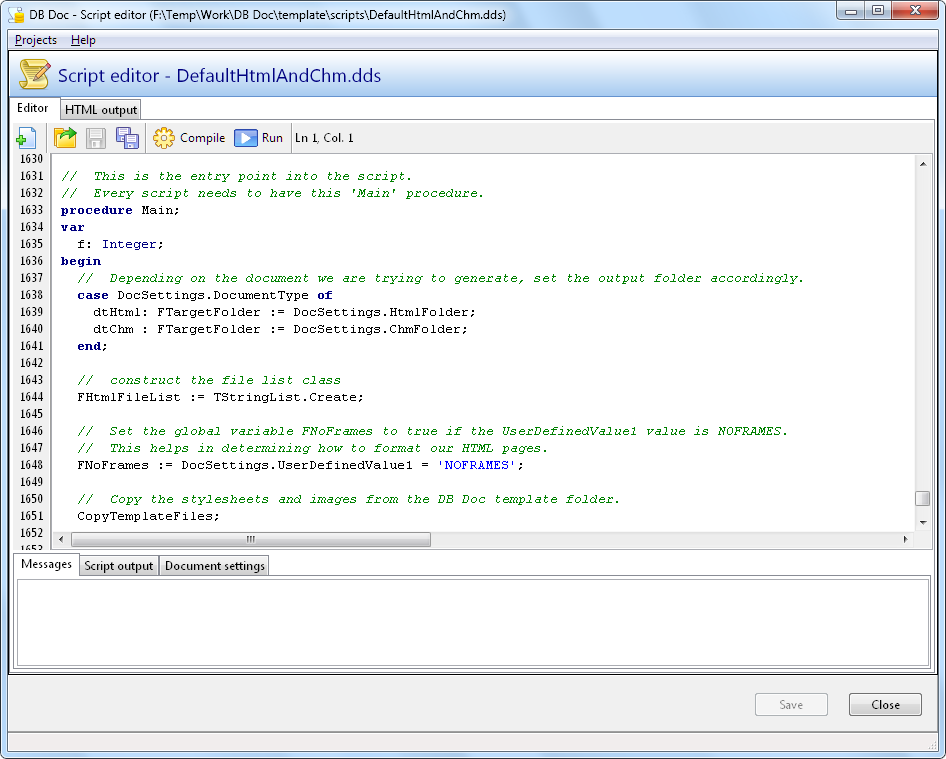

- #Script guide editra how to#
- #Script guide editra install#
- #Script guide editra update#
- #Script guide editra code#
The function ConvertTo-Gb takes a value and converts it to Gigabytes and returns the result. You can find a good example of that in this OneDrive Size Report script.
#Script guide editra code#
$users.ForEach Using Read-Host inside PowerShell Script Functionsįunctions are a great way to organize and reuse pieces of code inside your script.
#Script guide editra update#
Taking the example above, the following code block will try to find and update the Azure AD user, if an error occurs in the Try block, then the Catch part will show an error. But a better solution would be if the script output’s the name of the users it didn’t update and just continues with the next one. When one of the user accounts doesn’t exist, the script will run into an error and stop. Sometimes this is fine, but on other occasions, you might want to show a more readable error or simply continue.įor example, when you are updating multiple users in the Active Directory using a ForEach loop. Normally when a function doesn’t work or runs into an error, the script will simply stop and throw an error. Try-Catch blocks are used to handle errors in a proper way. Learn more about For loops, ForEach statements, and Do While loops in this article. $newFile = "$path\while_test_file_" + $i + ".txt" While (Test-Connection -ComputerName 8.8.8.8 -Quiet -Count 1) A while loop will only run when a condition is met, the Do-While always runs once and as long as the condition is true. Inside the ForEach block you can access each property of the object, for example, if we get all the mailboxes, we can access the display name as follows: $mailboxes = Get-EXOMailbox -RecipientTypeDetails UserMailboxīesides ForEach loops, we can also use While and Do-While loops. In the example above we only used a simple array, but you can also use ForEach on objects. For example, we take the array of fruits and write each item (fruit) to the console: $fruits = Foreach block ForEach loops allow you to go through each item in a collection and do something with that item. Looping through data is one of the common tasks in any scripting language. } Looping through data with Foreach and Do-While Or as a config file inside your script: $mail = '' Variables can not only store data, like strings, and integers, but also the complete output of cmdlets. In PowerShell we don’t need to initialize the variables, we can just create them when needed. When writing scripts you will often need to store data temporarily, so you can use it later in your script. Removes all resources from a container, but doesn’tīreak the connection with the other system But the most common verbs that you will come across are: VerbĪdds or appends are resources to another item The are a lot of approved verbs that you can use when you are creating your own PowerShell commands or functions.
#Script guide editra install#
To use the editor with PowerShell, you will need to install a plugin (extension). This editor, from Microsoft, is completely free and can be used on Windows, Linux, and macOS. And what I like the most is that you can create a project, allowing you to quickly switch between files, and keep your files organized.įor PowerShell, one of the best free editors to start with is Visual Studio Code. They come with syntax highlighting, autocomplete functions, error detection, etc. It works for small scripts, but a good editor makes writing PowerShell scripts a lot easier. Most people that start with writing PowerShell scripts start in a simple notepad tool, like Notepad++. At the end of the article, you will also find a template that you can use for your scripts.
#Script guide editra how to#
Which tools you can use, how to format your scripts and some general tips to get started. In this article, I will explain how you can create your own PowerShell Scripts.

Comparison Operators and If-Else Conditions.


 0 kommentar(er)
0 kommentar(er)
